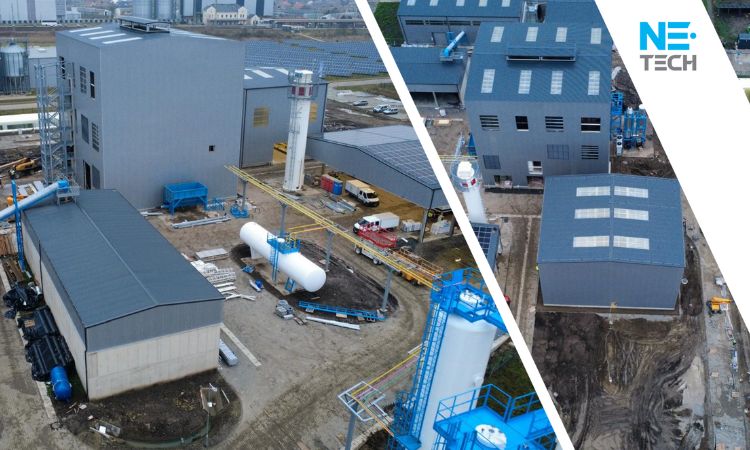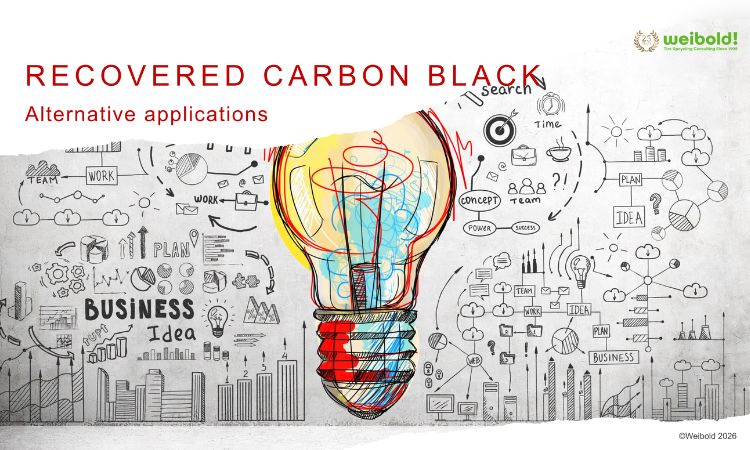Weibold Academy: Tire pyrolysis, products and applications
Month by month, our weibold! Academy series dwells deeper into the world of tire recycling, its products and applications. This month, we are sharing information on tire pyrolysis, its products and applications.
Tyre pyrolysis: products & applications
Pyrolysis is a thermochemical process used to decompose organic material, namely heat treatment in the absence of oxygen. In recycling industry, tire pyrolysis works the same way: heat is applied to feedstock in vacuum or at atmospheric pressure to decompose whole or shredded tires into marketable materials. Four main materials derived from end-of-life tires by weight/volume in descending order are fuel oil, carbon char, steel wire and gas.
Nowadays, there are rather different types of equipment available on the market for a good-quality tire pyrolysis. Apart from treatment temperature, there are batch and continuous feed systems available. Opting for any of them, operator needs to account for downtime, maintenance cost, number of employees and recycling capacity, which are all different for these two general types. As regards to production capacity, a shredder might be needed to feed material into the reactor with continuous combustion system. Typically, lifetimes of continuous and batch systems can differ.
As mentioned above, four main products of tire pyrolysis by weight/volume in descending order are fuel oil, carbon char, steel wire and gas. Unfortunately pyrolysis products in their raw form have relatively low market values. This is attributed to lower product quality compared to those of competing products like virgin carbon black (CB) and fuel oil. Pyrolysis products need to be refined and upgraded to replicate and generate specific properties similar to those of higher value products to withstand market competition.
Oil
Oil makes up approximately 35-45% of pyrolysis output depending on process conditions. Recovered fuel oil consists of three fractions with the middle fraction prevailing and it cannot be considered a substitute for traditional fuels before purification and sometimes additional treatment. Width of application of tire-derived pyrolysis oil depends on regulations in particular countries where a project is carried out. In countries with strict environmental protection regulations pyrolysis oil may require additional treatment and refinement, which in turn will increase production costs and lower profit margins.
The main fields of application are:
- maritime fuel fuel for vehicular engines fuel for stationary engines (generators) furnace fuel used by local (community) heating companies.
- Pyrolysis fuel prices largely depend on oil prices, however when oil price is high, it is commercially viable to sell pyrolysis fuel with rebates, attracting customers and expanding sales volumes. Also, some pyrolysis equipment enables use of not only tires, but plastic feedstock. However, our research shows that it is not recommended to mix tires and plastic due to different nature of materials and residuals.
- The main challenge to market the fuel in different countries of the world is sulfur content. Regulations vary from country to country, but usually sulfur content should be not higher than 0.5%. In case with maritime fuel, regulations, may pose rather high requirements, but the problem may be tackled by either installing additional refinement equipment at the factory, or applying purification systems onboard the vessel, which is common for maritime transporters due to different environmental regulations in various water areas.
Carbon Black
Carbon black accounts for approximately 30 to 45 percent of tire-derived pyrolysis output. Tire-derived carbon char may appear an economically attractive and valuable product with a potential to compose a significant portion of plant’s revenues. In contrast to common views, carbon char is not an easily marketable commodity. Carbon char, commonly referred to as pyrolysis carbon black or alternative carbon black or recovered carbon black (rCB), is a mixture of carbon, ash, zinc and sulphur. In its properties, rCB is comparable with but at the same time inferior to those of high value virgin grades rCB. The degree of purity and amount of treatment required by the end product will have a major impact on the value of rCB, plant’s overall profitability and profit margins.
Gas
Gas output makes up the smallest fraction of tire pyrolysis output. Gas released during thermal decomposition of ELT has sufficiently high calorific value to power the operation. Thus, the bulk of pyrolysis plants are almost self-sufficient in terms of energy consumption and some are even capable of producing electricity (as claimed by some technology suppliers).
Pyrolysis gas is usually referred to as residual and is burnt either within the reactor or in the turbine. Due to purification problems and complexity, the gas cannot be sold as a fuel. Therefore, there is a better alternative to convert it into electricity. Given current high electricity prices, both gas and heating oil can significantly enhance commercial viability of tire pyrolysis plant.
Right production technology
Tire recycling experts of weibold! regularly carry out researches on tire recycling and pyrolysis equipment to identify the most efficient and reliable equipment available on the market today.
To find out more about high-quality production technologies, detailed market requirements for materials and customers for tire-derived pyrolysis products, send us your inquiry to sales@weibold.com.
Weibold is an international consulting company specializing exclusively in end-of-life tire recycling and pyrolysis. Since 1999, we have helped companies grow and build profitable businesses.









